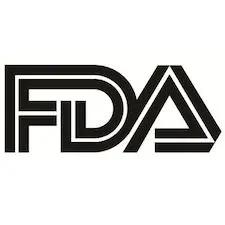News
Article
Ophthalmology Year in Review: 2024
Author(s):
Key Takeaways
- FDA approvals in 2024 included home OCT devices, gene therapies for nAMD, and AI for diabetic retinopathy screening, enhancing accessibility and patient care.
- Novel therapies like clobetasol propionate eye drops and oral gildeuretinol showed promise in managing post-surgical pain and geographic atrophy.
A look back at some of our top coverage in ophthalmology from 2024, including pipeline news and FDA approvals.
Credit: HCPLive

Ophthalmology achieved groundbreaking advancements in 2024, with innovative therapies and cutting-edge technologies reshaping care for some of the most challenging eye conditions. From the US Food and Drug Administration (FDA) approval of the first home optical coherence tomography (OCT) device to advances in gene therapy for neovascular age-related macular degeneration (nAMD) and retinitis pigmentosa, the year brought significant milestones in patient care. Regulatory breakthroughs, including the authorization of autonomous artificial intelligence (AI) for portable diabetic retinopathy screening and the approval of novel therapies like clobetasol propionate eye drops for post-surgical pain, demonstrated a commitment to improving accessibility and outcomes.
On the innovation front, new treatment modalities continued to make huge strides. Promising data from trials of RGX-314 and Ixo-vec reinforced the potential of long-term solutions for reducing treatment burden in nAMD, while groundbreaking results for oral gildeuretinol offered hope for slowing geographic atrophy progression. Regulatory shifts, such as the reintroduction of Susvimo and the approval of a prefilled syringe for faricimab, further simplified treatment delivery for retinal diseases. As the year draws to a end, these advancements highlight an exciting future for ophthalmology, with patient-centric approaches driving progress in vision preservation and restoration.
FDA, Tarsier Pharma Reach Agreement on Phase 3 Trials of TRS01 Eye Drops
On January 16, 2024, Tarsier Pharma received agreement from the FDA under a Special Protocol Assessment (SPA) for the Phase 3 Tarsier-04 trial investigating TRS01 eye drops (Dazdotuftide) for the treatment of non-infectious uveitis, including uveitic glaucoma. The regulatory agency agreed the clinical trial protocol and planned statistical analysis of Phase 3 trial would address objectives supporting regulatory submission.
FDA Approves Clobetasol Propionate Eye Drop for Post-Ocular Surgery Pain
On March 4, 2024, the FDA approved clobetasol propionate ophthalmic suspension 0.05% (APP13007) for treating post-operative inflammation and pain following ocular surgery. Awarded to a collaborative team of Formosa Pharmaceuticals and AimMax Therapeutics, clobetasol propionate ophthalmic suspension 0.05% for post-ocular surgery pain marks the first new steroid in the ophthalmic market in over 15 years.
RGX-314 Gene Therapy for nAMD Well-Tolerated in Phase 1/2a Study
Subretinal delivery of ABBV-RGX-314, a potential one-time gene therapy, was well-tolerated without a clinically recognized immune response in the treatment of neovascular (wet) age-related macular degeneration (nAMD) in phase 1/2a trial results. These 2-year data suggested the novel approach of RGX-314 for sustained vascular endothelial growth factor (VEGF)-A suppression could safely maintain vision and reduce treatment burden after a single dose.
FDA Authorizes Autonomous AI for Portable Diabetic Retinopathy Screening
On April 30, 2024, the FDA cleared the first, fully autonomous artificial intelligence (AI) for portable diabetic retinopathy screening, with the ability to diagnose the disease from retinal images obtained by a handheld camera. Awarded to AEYE Health, the AEYE Diagnostic Screening (AEYE-DS) technology marked the first autonomous AI solution to allow accessible, portable screening using the Optomed Aurora device.
PAVIA: Duravyu Misses Primary Phase 2 Endpoint in Diabetic Retinopathy
Topline results from the Phase 2 PAVIA trial found the vorolanib intravitreal insert (DURAVYU™) missed its pre-specified primary endpoint, without displaying an improvement of ≥2 Diabetic Retinopathy Severity Scale (DRSS) by week 36. Announced by Eyepoint Pharmaceuticals, the company still reported Duravyu stabilized or improved disease severity with reduced rates of NPDR progression and a favorable safety and tolerability profile.
FDA Approves Prefilled Syringe of Faricimab (Vabysmo) for AMD, DME, and RVO
On July 4, 2024, the FDA approved a 6.0 mg single-dose prefilled syringe of faricimab (Vabysmo) for use in the treatment of a trio of ophthalmic disorders, including nAMD, diabetic macular edema (DME) and macular edema following retinal vein occlusion (RVO). Awarded to Genentech, the prefilled syringe is designed to simplify administration and marked the first and only syringe with an FDA-approved bispecific antibody to treat retinal conditions.
Genentech Announces Reintroduction of Susvimo for Wet AMD
On July 8, 2024, Genentech/Roche has signaled the reintroduction of Susvimo® (ranibizumab injection) 100 mg/mL for intravitreal use via an ocular implant for neovascular (wet) age-related macular degeneration (nAMD), marking the end of a voluntary recall. The FDA granted a post-approval supplement to the Biologics License Application for Susvimo based on component-level updates to the ocular implant and refill needle.
Later that month, on July 18, 2024, the FDA accepted the supplemental BLA (sBLA) for Susvimo for the treatment of DME and diabetic retinopathy. The filing was accepted based on the 1-year study results from the Phase 3 Pagoda and Pavilion studies, with both studies meeting their primary endpoints of non-inferior visual acuity gains from baseline to monthly ranibizumab and superior improvements on the Diabetic Retinopathy Severity Scale (DRSS) to clinical observation, respectively.
SAGA: Oral Gildeuretinol Achieves Meaningful Reduction in GA Growth Rate
On September 17, 2024, Alkeus Pharmaceuticals announced oral gildeuretinol acetate (ALK-001) achieved a clinically meaningful reduction in geographic atrophy (GA) lesion growth at 24 months in patients with GA secondary to AMD. Gildeuretinol, a novel molecule created as a specialized form of deuterated Vitamin A, also achieved a statistically significant slowing of low-luminance visual acuity (LLVA) decline at 24 months, with a favorable safety and tolerability profile in patients with GA.
ODYSSEY: CLS-AX Maintains Stable Visual Acuity in Wet AMD Treatment
On October 9, 2024, Clearside Biomedical announced axitinib injectable suspension (CLS-AX) achieved all primary and secondary outcomes in the treatment of nAMD in the Phase 2b ODYSSEY trial. Suprachoroidal CLS-AX demonstrated stability in visual acuity and anatomical control for up to 6 months, with a well-tolerated safety profile without ocular or treatment-related serious adverse events (SAEs).
Aldeyra Resubmits New Drug Application for Reproxalap for Dry Eye Disease
On October 3, 2024, Aldeyra Therapeutics resubmitted a New Drug Application (NDA) to the FDA for their investigational new drug candidate, topical ocular reproxalap, for the treatment of signs and symptoms of dry eye disease (DED). The resubmitted NDA for reproxalap included positive results from a recently finished Phase 3 DED symptom trial requested by the FDA after a Complete Response Letter (CRL) received in Novemebr 2023.
The resubmitted NDA also involved a draft label reflecting acute activity in reducing dry eye symptoms in a dry eye chamber trial, chronic activity in reducing dry eye symptoms in a field trial, and acute activity in reducing ocular redness in two dry eye chamber trials.
Nanoscope Signals BLA Submission for MCO-010 for Retinitis Pigmentosa
On October 10, 2024, Nanoscope Therapeutics announced plans to submit the Biologics License Application (BLA) for MCO-010 gene therapy for the treatment of severe vision loss due to retinitis pigmentosa in the first quarter of 2025. The announcement followed a productive meeting with the FDA discussing the MCO-010 clinical trial program with the agency acknowledging the company’s proposal for the next steps for submission.
Earlier in the year, positive topline results from the 2-year Phase 2b RESTORE trial showed statistically significant and clinically meaningful improvement in best-corrected visual acuity (BCVA) with MCO-010 in patients with permanent and severe vision loss from advanced retinitis pigmentosa.
FDA Issues CRL to Avacincaptad Pegol sNDA for Geographic Atrophy
On November 15, 2024, the FDA issued a CRL for the supplemental New Drug Application (sNDA) of avacincaptad pegol intravitreal solution (IZERVAY) for the treatment of GA secondary to AMD. Announced by Astellas Pharma, the sNDA was intended to include new positive Phase 3 2-year data from the GATHER2 trial in the US prescribing information.
Intended for a decision by its Prescription Drug User Fee Act (PDUFA) target action date of November 19, 2024, the FDA indicated it cannot approve the sNDA in its present form, owing to comments on a statistical matter related to labeling language proposed by Astellas. The agency outlined no comments on the safety or benefit-risk profile of avacincaptad pegol for GA secondary to AMD.
Gildeuretinol for Stargardt Secures FDA Rare Pediatric, Fast Track Status
On November 18, 2024, Alkeus Pharmaceuticals announced gildeuretinol (ALK-001), an investigational oral therapy, received Rare Pediatric Disease and Fast Track designations from the FDA for the treatment of Stargardt disease. The company indicated its plans to apply for a Priority Review voucher with the submission of the NDA for gildeuretinol for Stargardt.
LUNA, OPTIC Data Support Long-Term Benefit of Ixo-Vec for Wet AMD
On November 18, 2024, Adverum Biotechnologies announced topline 1-year results from the LUNA Phase 2 trial and 4-year follow-up of the OPTIC first-in-human trial. These data supported the long-term potential of intravitreal ixoberogene soroparvovec (Ixo-vec) gene therapy for patients with nAMD, with 52-week efficacy data on the 6E10 dose and 4-year data on the 2E11 dose demonstrating maintenance of visual and anatomic endpoints, with an ≥80% reduction in injection burden and ≥50% injection freedom.
Bringing it All Back Home: Reshaping Ophthalmology’s Clinic with Home OCT
Traditional optical coherence tomography (OCT) devices require a patient with retinal diseases to visit an office, an often time-consuming task, and there is a delay between scans which can lead to disease progression. In May 2024, the FDA granted De Novo authorization to Notal Vision’s patient self-operated home OCT product, Scanly, for the monitoring of retinal diseases at home, including nAMD.
In our This Year in Medicine feature, we take a look at how the device could provide eye care professionals unprecedented insight into how treatments work in real-time, empowering patients to take a more active role in preserving their vision.





